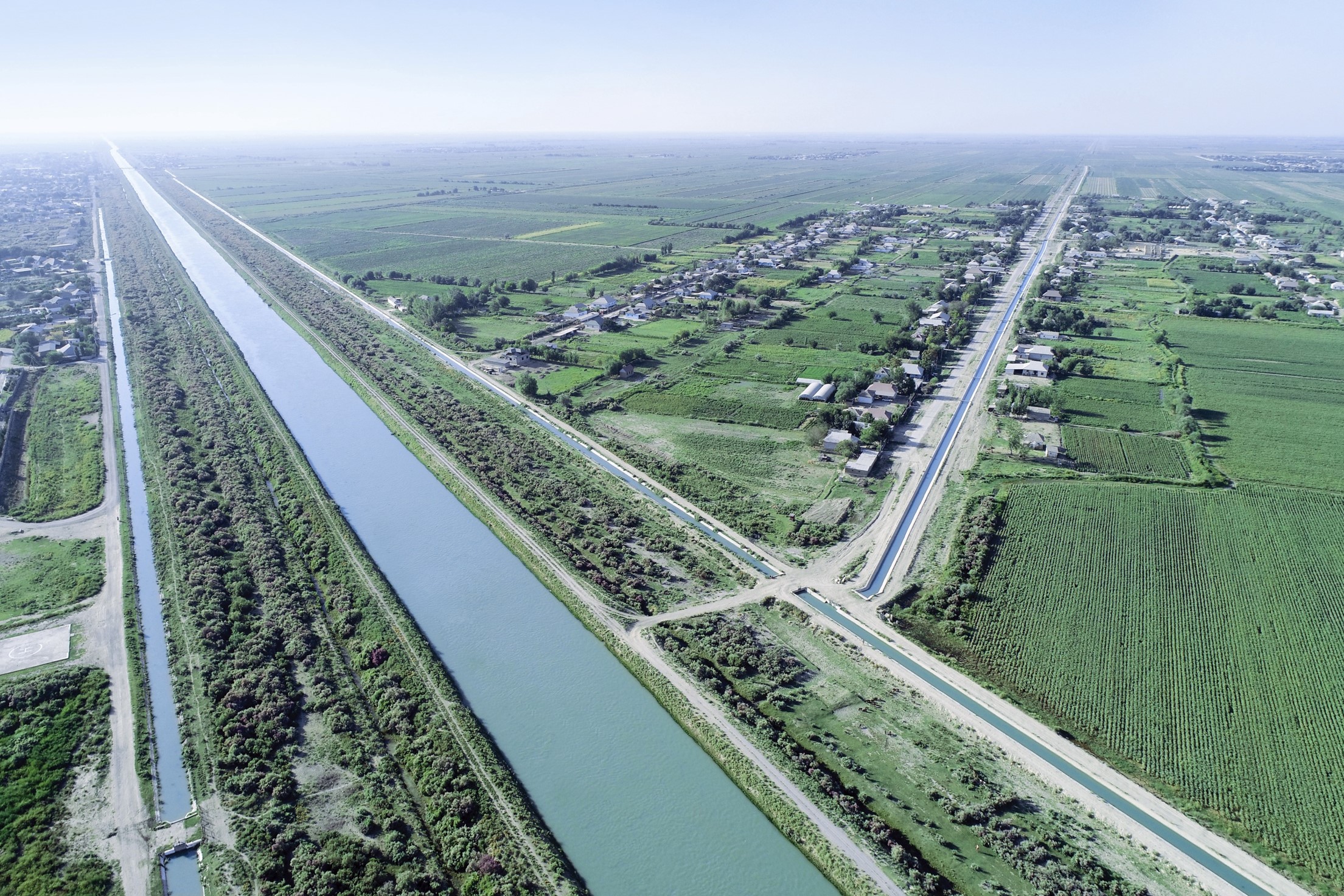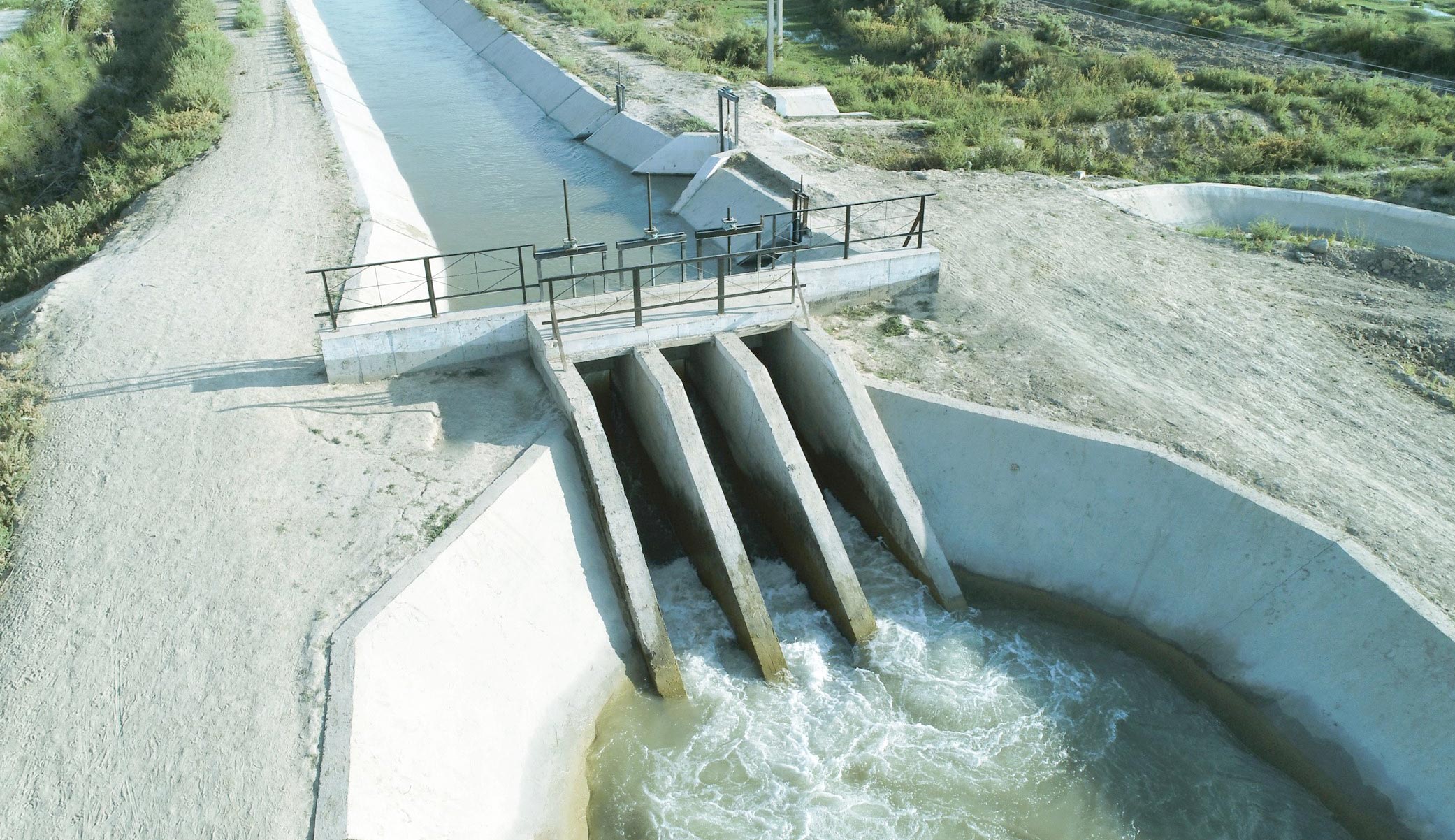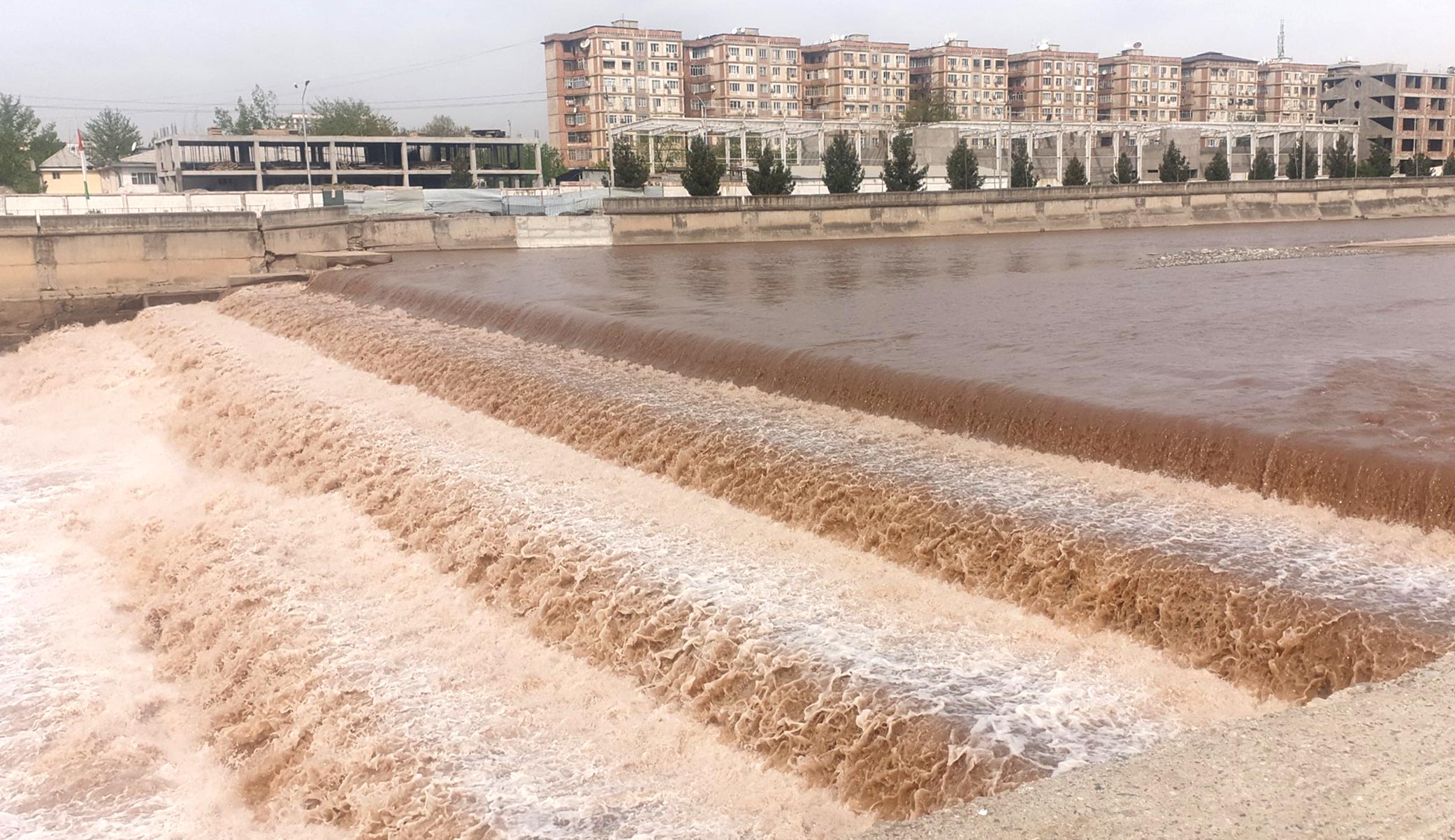
Climatic and environmental challenges in Central Asia
Central Asia faces pressing climatic and environmental challenges, exacerbated by global warming and rising temperatures. These changes have accelerated the melting of glaciers, which are vital water sources for the region. Combined with the desiccation of areas such as the Aral Sea basin—which impacts 60 million people, or 81% of the population—and the resulting dust, salt deposits, and sandstorms, the impact has been profound, leading to severe ecological and socio-economic consequences.
Historically, the region has struggled with low environmental stewardship, exemplified by the accumulation of household and industrial waste and inefficient water use (with costs at $25/m³/year compared to the global average of $19/m³/year). Agriculture, biodiversity, and water supply are particularly vulnerable, with land and water degradation impacting food security and livelihoods. Biodiversity loss further destabilises ecosystems, while increased water runoff and reduced inflow pose risks to humans and wildlife.
To address these challenges, Central Asian countries are taking a bilateral approach, that starts with increased participation in the global climate agenda. Crucially, community involvement in disaster risk reduction strategies and policies form an essential part of this action. Embracing Environmental, Social, and Governance (ESG) standards and green financing mechanisms will further drive sustainable development, aligning with SDG 13, which calls for urgent action to address climate change and its impacts.
In parallel with increased climate agenda participation, the adoption of climate-resilient design practices and modernisation of infrastructure will continue to advance the regions ability to mitigate adverse environmental and social impacts, safeguarding the future of Central Asia.
 The water canals rehabilitated as part of the IDIP-2 Project in Kazakhstan will provide water to 10,000 farmers at the command area of 113,000 ha.
The water canals rehabilitated as part of the IDIP-2 Project in Kazakhstan will provide water to 10,000 farmers at the command area of 113,000 ha.
Developing the water sector
Modernising the water sector is an essential step towards ensuring clean water supply and sustainable management of water resources in Central Asia, in line with SDG 6. The region’s governments are driven by the need to enhance access to water and sanitation due to the deteriorating state of many Soviet-era water systems. Aging infrastructure has resulted in inadequate water availability for households. For instance, in Kazakhstan, about 51% of the water grid is deemed substandard. With approximately 45% of the population residing in rural areas and nearly 30% of the economically active population employed in agriculture, the need for improved water infrastructure is particularly urgent. According to the Statistics Committee of the Ministry of National Economy, out of 8.5 million employed individuals, 2 million work in agriculture.
To address these pressing issues, countries are actively taking steps to develop improved water supply systems. Kazakhstan’s draft Comprehensive Water Sector Development Plan for 2023-2025 includes the establishment of a scientific centre for water resources management. Similarly, Tajikistan has initiated the development of a National Water Supply and Sanitation Program, set to run until 2030. These initiatives are vital for improving water infrastructure and ensuring best water management practices.
Tajikistan’s Dushanbe Water Supply and Sanitation Project aims to rehabilitate water supply and sewerage facilities to enhance resilience against climate change and strengthen the institutional capacity of SUE “Dushanbevodokanal”. This program will provide access to drinking water for 400,000 residents of Dushanbe, improve environmental sanitation in urban areas and reduce water losses.
Other countries in the region, including Uzbekistan, have also embarked on the path of disaster-resilient, climate-adaptive, and environmentally friendly development projects. SMEC has emerged as a reliable partner in this journey toward environmental and climate-resilient stewardship.

The Dushanbe Water Supply & Sanitation Project in Tajikistan will provide access to drinking water for 400,000 residents.
Climate resilience in action
The engineering sector in Central Asia plays a pivotal role in addressing climate change impacts and also future proofing, by incorporating sustainability design principles into infrastructure projects. Addressing climate change effectively requires adopting green technologies and reducing reliance on carbon-intensive fossil fuels. Renewable energy has a role to play, with technologies such as solar and wind power reducing our reliance on fossil fuels. Notably, energy generation is the largest source of global greenhouse gas emissions.
SMEC is currently working on numerous projects aimed at enhancing climate disaster resilience and mitigating the impacts of climate change. One of the hallmarks of SMEC’s work, in addition to utilising the latest design and technology, is capacity building within the client organisations and communities in which we work.
In Kazakhstan, SMEC is delivering the iconic Second Irrigation and Drainage Improvement Project (IDIP-2). The project involves engineering planning, design and construction supervision for irrigation, drainage, and dam safety improvements. Additionally, SMEC is focused on institutional development, training and capacity building for local agricultural institutions to enhance water management. The rehabilitated water canals will benefit 10,000 farmers across 113,000 hectares, and over 8,000 farmers will receive training in sustainable agricultural practices and efficient water management. GDP
Another significant project is the Climate Adaptive Water Resources Management Initiative in the Aral Sea Basin in Uzbekistan. This project aims to deliver climate-adaptive solutions for water resources management by modernising canal infrastructure to improve measurement, control, and conveyance within existing systems. It also includes policy and institutional strengthening for sustainable water resource management.
In Tajikistan, SMEC’s Climate and Disaster Resilient Irrigation and Drainage Modernisation Project in the Vakhsh River Basin will generate substantial environmental, social, and gender-related benefits. The project will introduce best practices to achieve higher crop yields and promote female participation in water management by improving women’s access to land, thereby reducing their vulnerability in the context of climate resilience.
These are just a few of the major undertakings by SMEC in Central Asia and Eastern Europe where we aim to not only deliver infrastructure designs but also enable and support the establishment of resilient communities that boost gender participation and reduce vulnerability. These and other projects undertaken by SMEC within the region directly contribute to the UN Sustainable Development Goals (SDGs).
On a global scale, SMEC and our parent company, the SJ Group are advancing renewable energy projects in collaboration with clients across various sectors, including hydropower, solar, wind, and emerging technologies like green hydrogen.
Conclusion
Addressing the water challenges of Central Asia requires a multifaceted approach that integrates innovative engineering solutions, robust policy frameworks, and active community engagement. The region’s climatic and environmental pressures, including the desiccation of the Aral Sea and rising desertification, underscore the urgency of further developing and adopting sustainable practices and advanced technologies.
Central Asia’s response must be anchored in the principles of the United Nations Sustainable Development Goals. By modernising water infrastructure, improving resource management, and embracing climate-resilient design, the region can mitigate adverse impacts on ecosystems, agriculture, and human health. Projects spearheaded by organisations like SMEC illustrate the potential for engineering excellence to drive meaningful progress, from enhancing water efficiency to fostering climate resilience.
Ultimately, the path forward hinges on a collaborative effort that bridges sectors and borders, leveraging global knowledge and resources to help build a sustainable future in Central Asia. As the region navigates these complex challenges, the ongoing commitment to innovation, cooperation, and sustainable development will be crucial in safeguarding the region’s water resources and ensuring the well-being of its people for generations to come.




